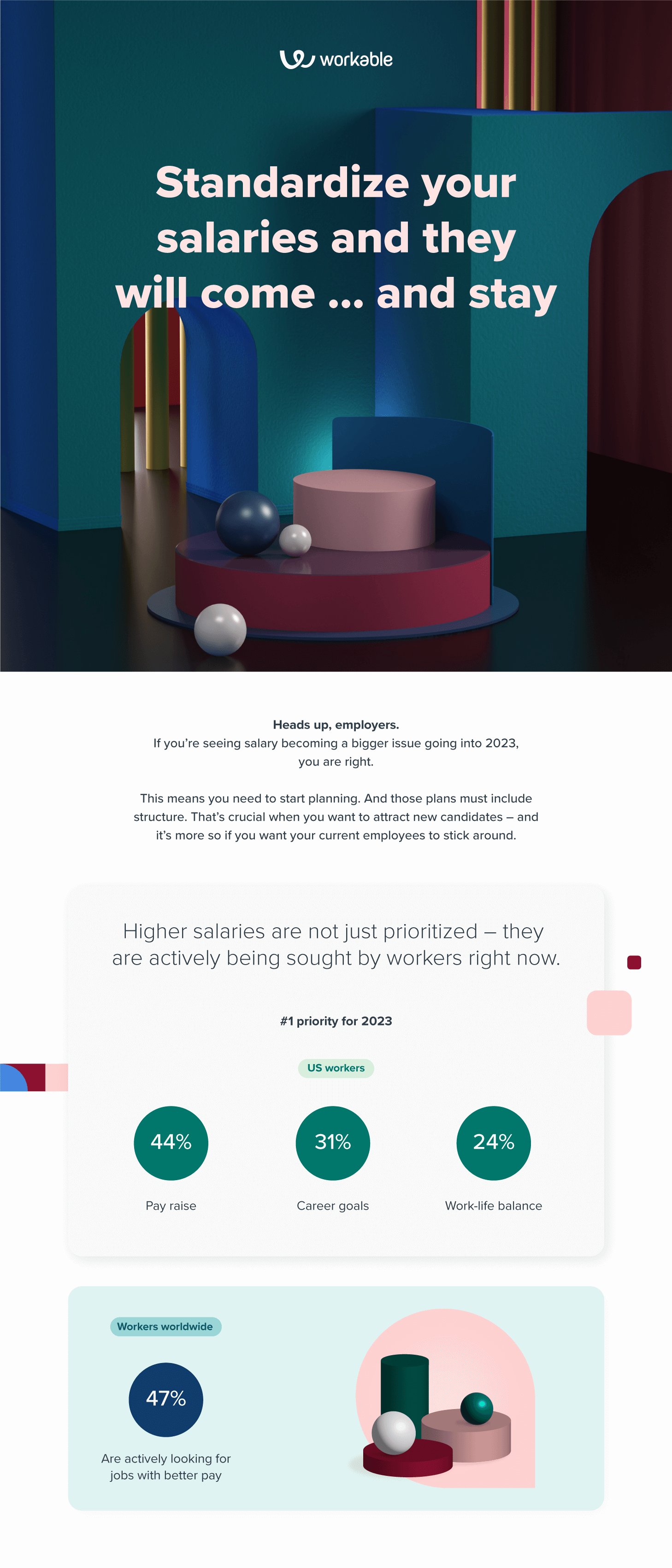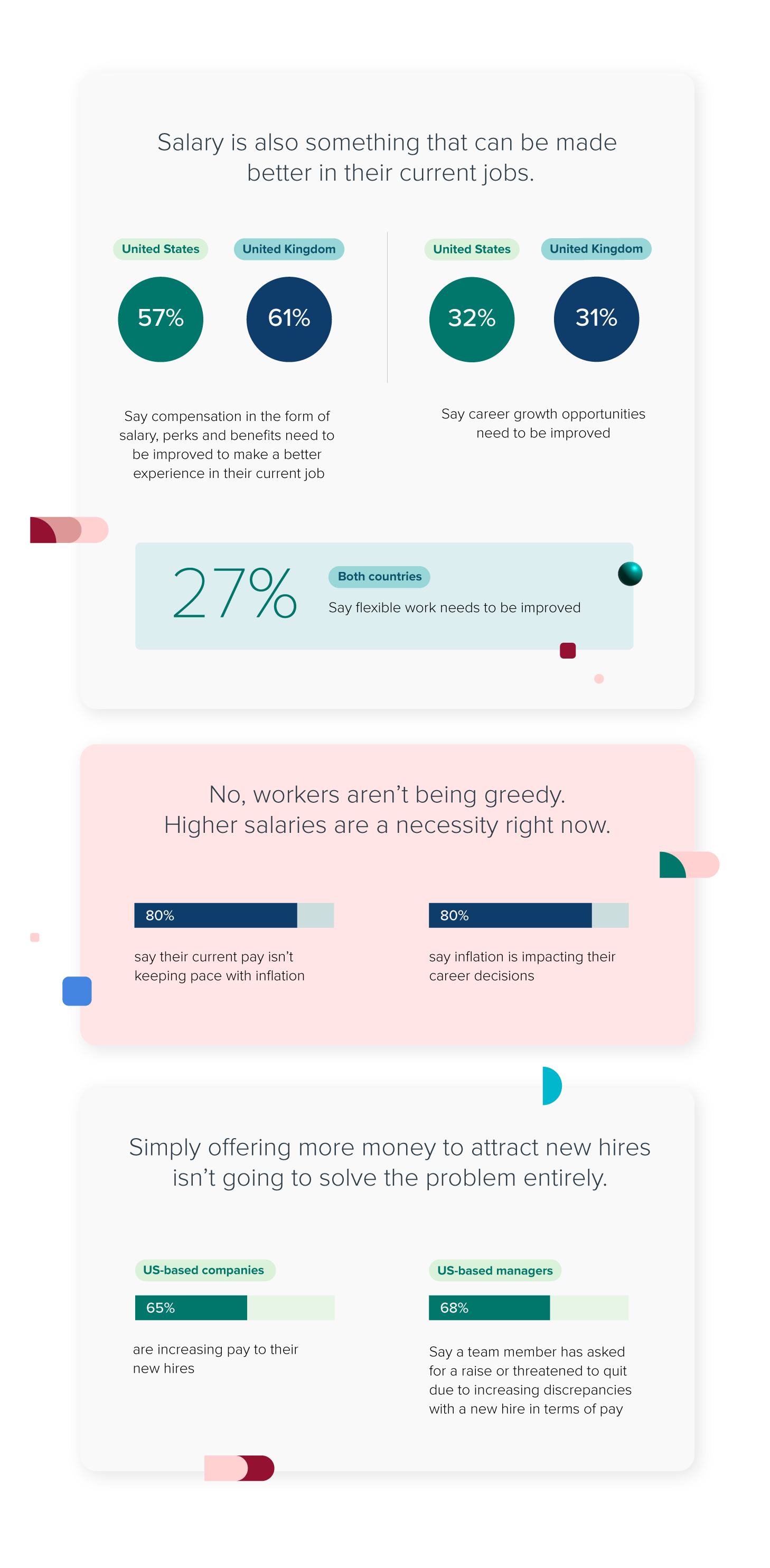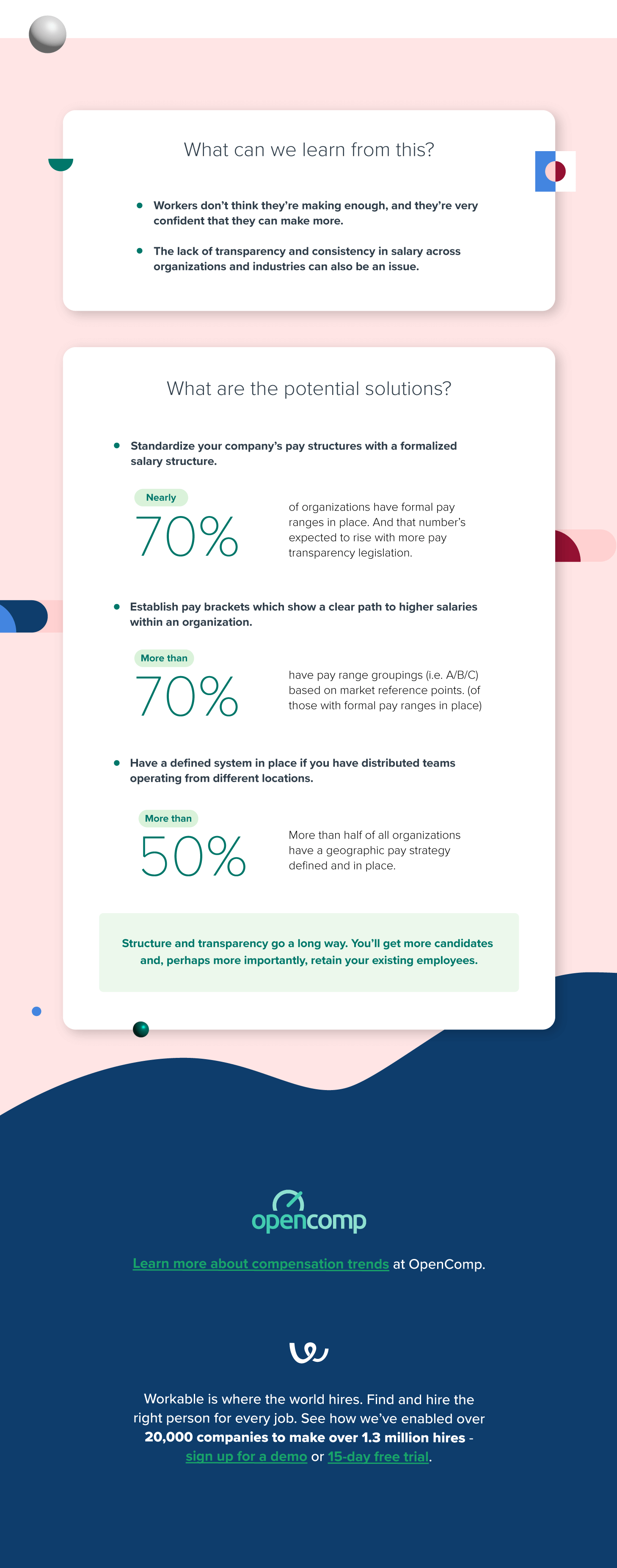INFOGRAPHIC: Standardize your salaries and they will come (and stay)
Heads up, employers. If you’re seeing salary becoming a bigger issue going into 2023, you are right.

This means you need to start planning. And those plans must include structure. That’s crucial when you want to attract new candidates – and it’s more so if you want your current employees to stick around.
Want to see all the data in one place? Jump to the full infographic below or download it for your own files.
Let’s look at the data behind this:
1) Higher salaries are not just prioritized – they are actively being sought by workers right now.
- 44% of US-based workers say a pay raise is the #1 priority for 2023, ahead of career goals (31%) and work-life balance (24%)
- 47% of workers worldwide are actively looking for jobs with better pay
2) Salary is also something that can be made better in their current jobs.
- 61% in the UK and 57% in the US say compensation in the form of salary, perks and benefits need to be improved to make a better experience in their current job
- That’s much higher than career growth opportunities (31% in UK, 32% in US) and even flexible work (27% in both countries)
3) No, workers aren’t being greedy. Better salaries are a necessity right now.
- 80% worldwide say their current pay isn’t keeping pace with inflation
- 80% of workers say inflation is impacting their career decisions
4) Simply offering more money to attract new hires isn’t going to solve the problem entirely.
- 65% of US-based companies are increasing pay to their new hires
- But this is leading to dissent: 68% of managers in the US say a team member has asked for a raise or threatened to quit due to increasing discrepancies with a new hire in terms of pay
What can we learn from this?
Workers don’t think they’re making enough, and they think – or know – they can make more.
The lack of transparency and consistency in salary across organizations and industries can also be an issue.
What are the potential solutions?
First, standardize your company’s pay structures with a formalized salary structure. Let’s look at some data from a recent OpenComp study: Almost 70% of organizations have formal pay ranges in place. And that number’s expected to rise with more pay transparency legislation.
Second, establish pay brackets which show a clear path to higher salaries within an organization. Of those with formal pay ranges in place, more than 70% have pay range groupings (i.e. A/B/C) based on market reference points.
And third, have a defined system in place if you have distributed teams operating from different locations. More than half of all organizations have a formal geographic pay strategy.
Ultimately, structure and transparency go a long way. You’ll get more candidates and, perhaps more importantly, retain your existing employees.








